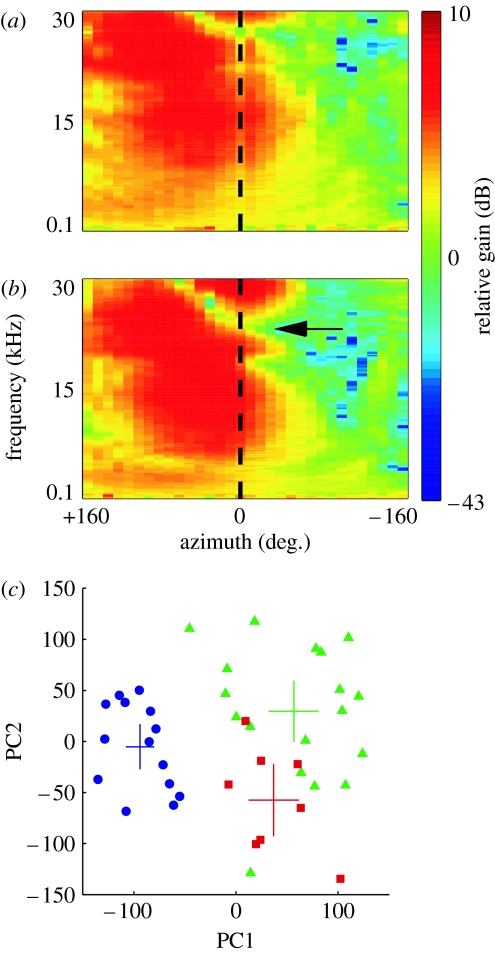Figure 1.
The acoustical cues that provide the basis for auditory localization change in value as the head and ears grow. Directional transfer functions (DTFs) from (a) an infant (post-natal day (P) 33) and (b) an adult ferret (Mustela putorius). Each plot shows how the gain in decibels of the external ear varies as a function of sound azimuth (x) and frequency (y) at a constant elevation (the animal's horizon). The difference in gain on either side of the midline (0°) is due to the acoustic shadowing effect of the head. The infant ear is less directional and features present in the adult, such as the high-frequency notch (arrowed in (b)), are shifted to higher frequencies. (c) Age-related differences are quantified for a large number of animals by converting each DTF to a vector and performing a principal components analysis on the population of DTF vectors. Data are plotted along the first two principal components (which cumulatively explain 56% of the variance). Points are labelled according to the age of the animal and each animal is represented by two data points, one for each ear. The large crosses indicate the mean and 95% confidence intervals for each distribution. There is a clear distinction between the infant (blue, P33–P37) and adult points (green) with no overlap between the distributions. Juvenile animals (red, aged approx. P50 (P49–P51)) have intermediate DTFs that overlap with the adult distribution, indicating that spectral cues approach maturity three to four weeks after the onset of hearing in this species. Adapted from Campbell et al. (2008).

